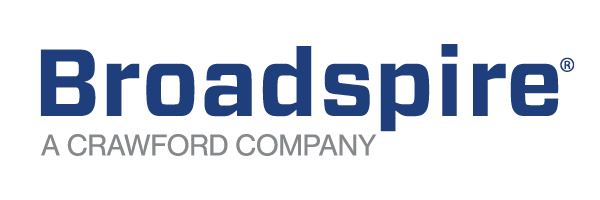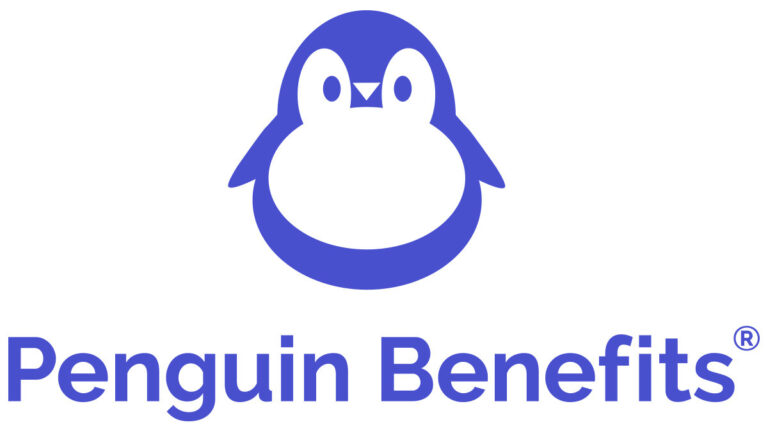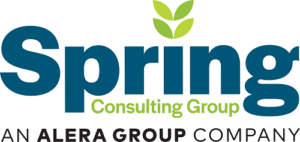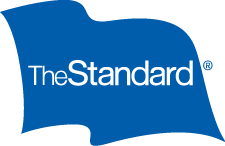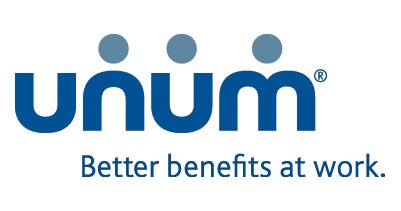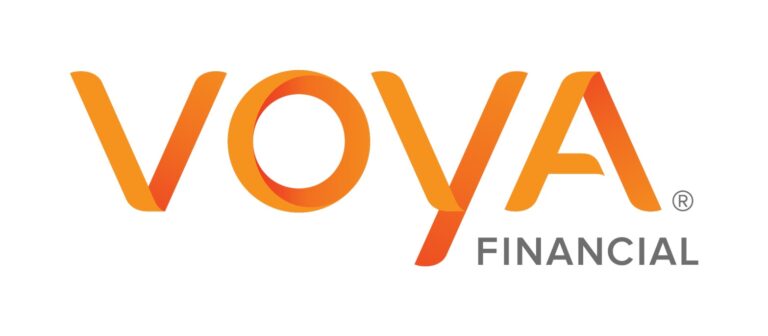Creating programs that address an employee’s unique social determinants of health (SDOH) can improve employee health and productivity, say Patty Nunez, MA, CRC, CDMS, CCM, Commissioner, Commission for Case Manager Certification, and director, Claim Supply Management, CNA Insurance, and Vivian Campagna, DNP, RN-BC, CCM, chief industry relations officer with the Commission for Case Manager Certification in this episode of the podcast. The work can also prevent accidents or injuries that prompt leaves of absence. Hear what employers can do to embrace the concept and construct of SDOH to improve employee health, wellness, and safety.
Resources:
- Addressing Social Determinants of Health Improves Absence Management and Return to Work
- DMEC resources
- FMLA/ADA Training for Supervisors and Managers
Transcript
DMEC: Welcome to Absence Management Perspectives: A DMEC Podcast. The Disability Management Employer Coalition, or DMEC as we're known by most people, provides focused education, knowledge, and networking opportunities for absence and disability management professionals. DMEC has become a leading voice in the industry and represents more than 18,000 professionals from organizations of all sizes across the United States and Canada. This podcast series will focus on industry perspectives and provide the opportunity to delve more deeply into issues that affect DMEC members and the community as a whole. We're thrilled to have you with us and hope you'll visit us@dmec.org to get a full picture of what we have to offer, from webinars and publications to conferences, certifications, and much more. Let's get started and meet the people
behind the processes.
Heather Grimshaw: Hi, we're glad you're listening. I'm Heather Grimshaw, communications manager for DMEC, and we're talking about social determinants of health and how it affects employee health and productivity with Patty Nunez, director of claim supply management with CNA Insurance, and Vivian Campagna, chief industry relations officer with the Commission for Case Manager Certification. We will publish their full titles in the notes section of this episode and have asked them to talk with us about the article they wrote with colleagues for at work magazine titled addressing social determinants of health improves absence management and return to work. We will unlock this article for listeners and include the link in the notes section as well. So, Vivian, to start us off, would you please share a high-level definition of social determinants of health, or SDOH, the acronym which we might use during our conversation today, and why this is an important issue for employers?
Vivian Campagna: Well, the World Health Organization defines the social determinants of health as the non medical factors that influence health outcomes. They are the conditions in which people are born, grow, live, and age, and the wider set of forces and systems that shape the conditions of daily life. These forces and systems include economic, social, and political systems and policies that have an impact on the client's health and their well being.
Heather Grimshaw: That's really helpful. Thank you. So do you believe that more employers acknowledge the influence of social determinants of health, or SDOH, and are responding with programs that help support employees? Or is this issue still relatively new in terms of employer acknowledgement and action?
Vivian Campagna: So this is Vivian, and I would say that from my perspective with the employers that I have been contact with, it still seems to be relatively new because I'm not sure that they really understand the full impact of social determinants of health and how it impacts their employees. In cases where we have employees who are low wage employees, they may be working two or three different jobs in order to make ends meet. And employers aren't necessarily aware of that. Nor are they aware of the fact that if the employee gets hurt on their job, that they may be somewhere else working, doing something else, and may not be getting the services and the care they need to be able to return to work in a timely manner and with full capacity. Patty, do you have anything to say?
Patty Nunez: Vivian, I think those are really good points. I agree that certainly more acknowledgement and action would benefit, and there are probably many employers who would have never heard of social determinants of health and wouldn't know how to address them. I think that many employers, though, are aware that when workers come to work, we're just getting them for 8 hours a day, right? That we all have lives outside of our day to day jobs. So I think that there's a baseline awareness that there are other issues that do impact people and their lives. But as a concept, as a construct, social determinants of health, we're really in the beginning stages, I believe, for the employer world.
Heather Grimshaw: Patty, the article notes that social determinants of health, or SDOH, influences regular absences as well as disability leaves. What are the differences and similarities in terms of how it affects these two leave types? And how can employers ensure that SDOH is part of regular case management responsibilities?
Patty Nunez: So I think that if we look at workers compensation as a whole, which is the program that we utilize when a worker has illness or injury while on the job, the direct care and cost of those injuries are by and large covered under workers compensation. When you look at, however, the workers compensation world as a whole, when an employee is injured on the job, their wages are going to be reduced. Typically, the benefit can be anywhere, depending on statute, between 55 and 66% of average weekly wages, which is going to impact what the worker is taking home, right. And for individuals who may already be dealing with life stressors that are impacting them financially, or they have family issues that have to be addressed, that are going to be challenged by having a reduced salary, that's going to be a significant hit for the worker. If an employee does not feel as though the employer is supportive or recognizing of challenges they might be having, they may be less motivated to come to work, or people may be less motivated to come to work if they have other stressors in their lives. And that's where absenteeism comes into place.
Heather Grimshaw: The article notes a correlation between social determinants of health and absenteeism rates, as well as productivity levels, which Patty just mentioned. Would you elaborate on that concept and share some best practices employers should consider?
Vivian Campagna: So when we look at the social determinants of health in relation to where people live and what other health issues they may have, we have to look at the fact that there may be impacts not only on an injured worker, but on a regular worker going to work every day as far as what is happening with them. Employees that live in lower income housing may be impacted by issues such as mold or other factors that might exacerbate an asthma condition. If they're working in a factory and there are similar circumstances, are they being impacted by what's going on around them, by the environment in which they're living or working? And how does that impact their ability to get to work? If they're having an asthma attack, obviously, they may not be able to get to work. So there are a lot of health issues that would impact the employee's ability to work, and that can be impacted and influenced by the place where they live with place where they work. Best practices, obviously, are to have case managers that are in there that can get to the root cause of what's happening. And a lot of the questions that you talked about or that the article talks about do help to ask those what is the support system? Where do you live? Do you have the ability to have good food? Do you live in a place that we consider to be a food desert? A food desert is a place where you cannot get good quality healthy foods, fresh fruits and vegetables, good quality meats, that would help to support nutrition. So if a worker is not getting good quality foods and doesn't have proper nutrition, they don't necessarily have the energy to be able to go in and do the job that they're supposed to do. Are they working in a position that requires a lot of physical exertion? If so, and they don't have the ability to exert because they don't have good nutrition, there is the possibility that we need to know what's going on with them. I think that in terms of best practices, we need to have employers who are cognizant of social determinants of health and how they can impact not only an injured worker returning to work, but how they can impact a regular worker who may not be able to do the job that they're supposed to do. The other issue is in terms of workers who may have one or two jobs in order to be able to meet their financial obligations? Are they working two jobs? Are they not getting enough sleep? Are they coming into work tired? Do they work at a position where they may need to operate machinery? And if so, is that a danger that sets things up for an accident? And obviously, once you have an accident, you have probably an injured worker, and it's a perpetual cycle of issues. I think you need to have the ability to look at what's going on with your employees. There needs to be a way to be able to get to that information in a non judgmental and nonthreatening way so the employee will share with you what's happening outside of the actual workplace so that you can help them to understand. Maybe they need to go into a different position. Maybe they need to find something else to do. Maybe we need to address the fact that they do not have the ability to get proper food and have good nutrition. So I think that there are a lot of things that the employer can do that would help to ensure that their employees are able to fulfill the role functions.
Heather Grimshaw: I was hoping that the two of you would talk a little bit or share some information about references in the article to customized return to work programs and transitional return to work programs. So Vivian, you've set the stage really nicely here, referencing the ways in which not accessing or having access to good quality foods can affect productivity in the workplace, how being overly tired could pose a safety risk, and so hoping again that you'll share some information about what that looks like for employers to create these customized return to work programs and transitional return to work programs.
Vivian Campagna: So I think that it's important that the employer understands what's happening and is able to put in place helpful persons, such as case managers, who can help to get to the root of the problem in doing a customized return to work. If you have someone who is knowledgeable about case management or even a disability management specialist, that is able to take what the employee is telling them and be able to customize the piece of their plan that will get them to return to work. Do they have the ability to come and do that particular job? Are they working two jobs? Do they need consideration of what's going on in the other job? Is it a completely different type of work that they're doing? But if you have the ability to work employee to employee and customize it specifically to the employee, I think you have a better way of being able to understand how to create a plan that will work for them. Each plan, I think, needs to be individualized. There is no one size fits all in this category. I think we need to take into account all of those social determinants of health, the places where they live, the type of education they have, their health issues. So there may be other impacting health issues. It's not a return to work plan for everybody in a particular organization. That's the same. So we need to individualize what's happening. Patty, you want to weigh in?
Patty Nunez: Yes, Vivian, I couldn't agree more. And one of the things we talk about in the article is about how making it personal is really the best way to approach transitional programs or return to work programs. But if you think about it, back it up and think about it a little bit relative to customization is going to have to be personal to the workforce. Like you mentioned, if the employer is maybe in a more rural area where there could be some challenges with either access to providers, transportation or healthy foods. If while there are fast food places, what about an employer who would put in play on the recommendation of consulting with a case manager or disability management specialist? Something like monthly food fairs, where the local areas are invited to bring healthy foods in, give people exposure to maybe food choices that they might not have had available to them, where traditionally they haven't utilized those foods. That's one way an employer can support a healthy workforce. The other way is, of course, direct impact on the awareness, a direct approach that says just because a worker has been injured, we don't want to focus on what they can't do. The focus on what an individual can do, especially while they're recovering from an illness or injury, is really going to, I think, make the individual feel more productive and more valued and less disabled. And I'm doing air quotes with disabled because their employer sees them as a productive worker, even though maybe they can't do job a. But there are other things with the employer that they're able to do which will make them feel a sense of self worth as they're getting back to full functioning or maximum functioning that they can. And that's the whole underpinning of transitional work programs. Right. And return to work programs, customizing it for your employee base in a way that is respectful and that recognizes the value of work for all of us.
Vivian Campagna: Patty, I totally agree with you. But I also think that there are other best practices, and one of them is that the employer should find ways to be able to understand why their employees come to work. What is it they're looking to do? What's their motivation for work? And in terms of best practices and making it personal, I will say that I live in Manhattan, and there is a building going up two doors down from where I live, the apartment building in which I live. It is a huge high rise that's going up. And as I pass by their entrances every day, they have signs outside about safety. And while everybody knows the importance of safety, this one was kind of unusual to me, because what it is, is it's actually pictures of children, and the children have either hard hats or eye covers, and it says, daddy, please make sure that you protect yourself while you're working so that you can come back home to us. And I think things like that really kind of help to bring it home to employees, that not only is the organization concerned about their safety, but they're trying to present it in a way that brings in not only them on the job, but brings in the fact that they're there and that they have a life outside.
Heather Grimshaw: That's a great example, I think, a really effective one, and I'm sure one that resonates with the people who are working on that construction site as well as, to your point, the people who are walking by. Patty, what is the best way for employers to identify employees who are affected by social determinants of health and support them in appropriate ways?
Patty Nunez: So I think the best way is knowing your people. Right. And that's first and foremost. The relationship with an employee begins day one or even before day one, when you're interviewing a person or they're filling out an application, keeping your ear to the ground, walking around, seeing what your employees are talking about, what they seem to be interested in. That's first and foremost in understanding the people who you work with. Because, again, remember, keeping it personal. We're dealing with individuals. We're all people. We are a social group of people that interact with each other. Each of us have our own lives, our interests, our passions. And once the employer is aware of who they have working for them, they can really better assess how to motivate that individual, what's important to them, and what is going to keep them happy, working and productive. From a cost perspective, replacement costs, turnover costs are huge for employers. We all know that. And so the more that an employer can do to understand is really foundational. Beyond that, they can then begin to structure or build programs that will meet the needs of those employees, and, by the way, keep them working with them. We've all seen research that's out there that says that people, they leave companies because of their boss, and they stay because of their boss. If we think about our own jobs that we work at, right now we know if we want to do a temperature check of whether we're happy or not, or do we feel respected, do we feel productive? And that goes for any employee. And I think that from an employer perspective, keeping that in mind, getting to understand the communities that the employees come from, what drives them, is it their faith? Is it their family? All of those things can help an employer begin to craft that kind of work environment that will keep people productive and happy.
Vivian Campagna: And, Patty, I couldn't agree with you more. What I will say also is that if we are able to get to the root of who our people, who our employees are, and in some very large companies, that may be difficult for maybe the head of the company to know who they are, but your supervisor should be able to know who's working for them. And the more interest and the more commitment you show to the employee, the more likely it is that they're going to bring their whole self to work. And it's when they bring their whole selves to work that they are able to perform the job, to be able to do the right thing, and hopefully to not have injuries. I really know very few people who live to work. Most of us that I know work to live. And that's a very important statement, because without the jobs that we do, we could not have the lifestyle that we look at and we're interested in. So it's really kind of important that employers understand we're not there because we love to work, we're there because we have to. But if they make the job and the job site that much better, then they have a better employee, and they have people who are more motivated and obligated when it comes to being there.
Heather Grimshaw: That's great context, Vivian, thank you for that. And I think citing the difference between large employers can never know every one of their individual employees well enough, maybe to identify social determinants of health that might be influencing their health or their productivity or their ability to return to work. But the supervisors certainly can play that role, and I think to highlight that is really important. So thank you both.
Vivian Campagna: And, Heather, if the culture is such that the know feel empowered from the top down, then they will do that. They will be able to understand and know their employees because that's what they're getting from their supervisors and the people above them.
Heather Grimshaw: Absolutely. And you all have touched on some really important concepts from, I think, referencing the importance of feeling like you belong in an organization that you're seen and respected for your whole self. All certainly would contribute to productivity and employee tenure. The article cites increased costs of living as a contributing factor for financial insecurity for all employees, not just lower wage earners, as some may think. And I'm wondering what you see employers doing to handle this.
Vivian Campagna: I think it's definitely important because with the rising cost of inflation or the cost of living, the increased cost of living, with the fact that maybe there are families where we had both husband and wife working, and now all of a sudden there's a child in the picture and the wife stays home to take care of the child, or the husband stays home to take care of the child. How does the employer reconcile that in terms of the employee? How is that employee going to meet their expenses? And are there additional stresses on them that may make them take a second job and totally impact? Then you start this whole cycle, because then they may not be awake enough at times to really fulfill their full obligations. So I think, again, we go back to the whole issue of if the employer is aware of who their employees are, if they know who they are and just don't turn a blind eye to the fact that this person is here for 8 hours and they don't really care about what goes on the other 16 of that 24 hours day, then it does give us the ability to really think about the fact that employers are considerate and compassionate.
Patty Nunez: Vivian, I think you hit on some really good points there. I think from the perspective of rising inflation, rising costs, it's impacting everybody, and it has impacted everybody. And really the challenges have gone back a couple of years through what everybody went through with the pandemic and loss of wages, loss of jobs, increased cost, the stressors involved in that. So when you think about social determinants of health and all of the impact that societal, environmental, financial pressures have put on all of us as individuals, we have to understand that this is going to be one of the major areas that are impacted, and that is increased cost of living. So when you have people, either low wagers, high wage earners, really know that it even makes a difference, whereas the stressors are going to, we're all going to feel the stressors no matter where we are. But if you're looking at people in the beginning parts of their work life who maybe can't afford a mortgage or can't even afford rental apartment rentals, so are forced to be living at their parents homes, if they're fortunate enough to have parents, they can't afford to go out and get their own place to live. People in the middle of their lifespan who may have children as Vivian mentioned, or who may be supporting aging parents or aging family members who are now having those increased financial pressures because of inflation, they're going to have additional stressors that maybe they wouldn't have fathomed ten years ago. And then if you look at the people at the latter end of the spectrum in terms of people who are looking to retire and the financial wherewithal to be able to do that, and the uncertainty of whether or not they would have the resources as need to continue to work because of uncertainty with just all finances and cost of living, I think it's something that, it's a huge factor, I think, for all of us, and it's going to continue to play a big part in all of our lives, whether individually or whether part of a company, because then let's not even get into the costs arising for companies also. So you've got the employers have financial pressures, individuals have financial pressures. I think there's no easy fix to it. However, the awareness of its impact, that's going to, I think, make the difference between employers that are really successful and people who are able to thrive during these challenging times and those that struggle.
Vivian Campagna: I have one last thing to say, and that is it all comes back to social determinants of health, because it doesn't matter. In healthcare, we tend to think of social determinants of health as being those people at the lower end of the earning spectrum. However, social determinants of health impact everyone. I don't care where on the earning spectrum you are, because if you are up at the top and making a million dollars a year and you suddenly find yourself without a job, you have expenses that you've based on that million dollar income. And so the stress is incredible. If we don't understand where people are coming from and we don't know why they're doing what they're doing, we don't have a handle on how to deal with them. So we've come full circle. It's all social determinants of health, regardless of where you sit.
Heather Grimshaw: It's such a good point and you both have articulated that beautifully. Thank you for sharing the examples and tips for employers for how to address this issue of social determinants of health. We appreciate your time and you sharing your expertise with us.
Vivian Campagna: Heather, thank you so much for this opportunity.



